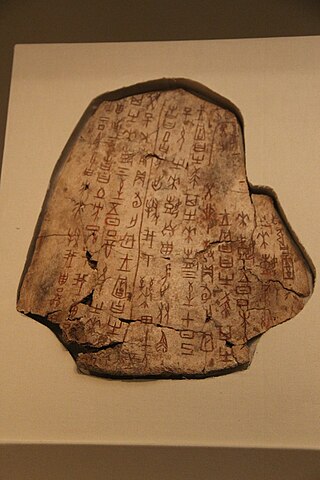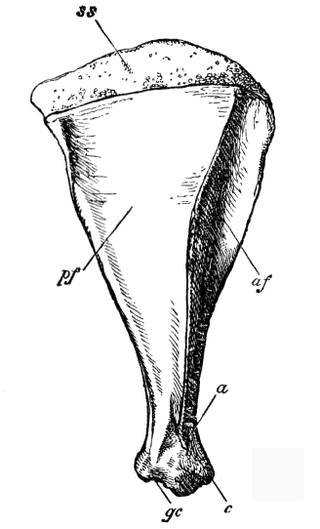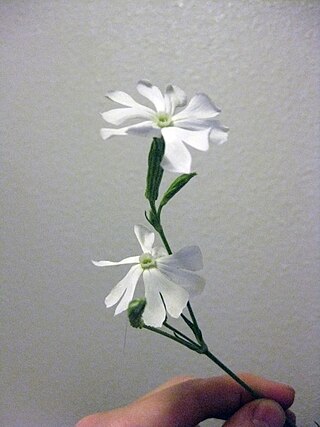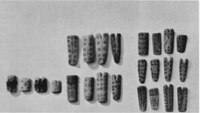
Divination is the attempt to gain insight into a question or situation by way of an occultic ritual or practice. Using various methods throughout history, diviners ascertain their interpretations of how a querent should proceed by reading signs, events, or omens, or through alleged contact or interaction with supernatural agencies such as spirits, gods, god-like-beings or the "will of the universe".
Witchcraft, as most commonly understood in both historical and present-day communities, is the use of alleged supernatural powers of magic. A witch is a practitioner of witchcraft. Traditionally, "witchcraft" means the use of magic or supernatural powers to inflict harm or misfortune on others, and this remains the most common and widespread meaning. According to Encyclopedia Britannica, "Witchcraft thus defined exists more in the imagination of contemporaries than in any objective reality. Yet this stereotype has a long history and has constituted for many cultures a viable explanation of evil in the world". The belief in witchcraft has been found in a great number of societies worldwide. Anthropologists have applied the English term "witchcraft" to similar beliefs in occult practices in many different cultures, and societies that have adopted the English language have often internalised the term.
Muthi is a traditional medicine practice in Southern Africa as far north as Lake Tanganyika.

A maraca, sometimes called shaker or chac-chac, is a rattle which appears in many genres of Caribbean and Latin music. It is shaken by a handle and usually played as part of a pair.

Traditional healers of Southern Africa are practitioners of traditional African medicine in Southern Africa. They fulfill different social and political roles in the community like divination, healing physical, emotional, and spiritual illnesses, directing birth or death rituals, finding lost cattle, protecting warriors, counteracting witchcraft and narrating the history, cosmology, and concepts of their tradition.

Oracle bones are pieces of ox scapula and turtle plastron, which were used for pyromancy – a form of divination – in ancient China, mainly during the Late Shang period. Scapulimancy is the specific term if ox scapulae were used for the divination, plastromancy if turtle plastrons were used. A recent count estimated that there were about 13,000 bones with a total of a little over 130,000 inscriptions in collections in China and some fourteen other countries.

Traditional medicine comprises medical aspects of traditional knowledge that developed over generations within the folk beliefs of various societies, including indigenous peoples, before the era of modern medicine. The World Health Organization (WHO) defines traditional medicine as "the sum total of the knowledge, skills, and practices based on the theories, beliefs, and experiences indigenous to different cultures, whether explicable or not, used in the maintenance of health as well as in the prevention, diagnosis, improvement and treatment of physical and mental illness". Traditional medicine is often contrasted with scientific medicine.

Oracle bone script is the oldest attested form of written Chinese, dating to the late 2nd millennium BC. Inscriptions were made by carving characters into oracle bones, usually either the shoulder bones of oxen or the plastra of turtles. The writings themselves mainly record the results of official divinations carried out on behalf of the Late Shang royal family. These divinations took the form of scapulimancy where the oracle bones were exposed to flames, creating patterns of cracks that were then subjected to interpretation. Both the prompt and interpretation were inscribed on the same piece of bone that had been used for the divination itself.

Babaaláwo or Babalawo in West Africa literally means "father of secrets" in the Yoruba language. It is a spiritual title that denotes a high priest of the Ifá oracle. Ifá is a divination system that represents the teachings of the Òrìṣà Ọrunmila, the Òrìṣà of Wisdom, who in turn serves as the oracular representative of Olodumare.

Alectryomancy is a form of divination in which the diviner observes a bird, several birds, or most preferably a white rooster or cockerel pecking at grain that the diviner has scattered on the ground. It was the responsibility of the pullularius to feed and keep the birds used. The observer may place grain in the shape of letters and thus discern a divinatory revelation by noting which letters the birds peck at, or the diviner may just interpret the pattern left by the birds' pecking in randomly scattered grain.

Scapulimancy is the practice of divination by use of scapulae or speal bones. It is most widely practiced in China and the Sinosphere as oracle bones, but has also been independently developed in other traditions including the West.

Astragalomancy, also known as cubomancy or astragyromancy, is a form of divination that uses dice specially marked with letters or numbers.

The beliefs and practices of African people are highly diverse, including various ethnic religions. Generally, these traditions are oral rather than scriptural and are passed down from one generation to another through folk tales, songs, and festivals, and include beliefs in spirits and higher and lower gods, sometimes including a supreme being, as well as the veneration of the dead, and use of magic and traditional African medicine. Most religions can be described as animistic with various polytheistic and pantheistic aspects. The role of humanity is generally seen as one of harmonizing nature with the supernatural.
Witchcraft in Latin America, known in Spanish as brujería, is a complex blend of indigenous, African, and European influences. Indigenous cultures had spiritual practices centered around nature and healing, while the arrival of Africans brought syncretic religions like Santería and Candomblé. European witchcraft beliefs merged with local traditions during colonization, contributing to the region's magical tapestry. Practices vary across countries, with accusations historically intertwined with social dynamics. A male practitioner is called a brujo, a female practitioner is a bruja.
Maya medicine concerns health and medicine among the ancient Maya civilization. It was a complex blend of mind, body, religion, ritual and science. Important to all, medicine was practiced only by a select few, who generally inherited their positions and received extensive education. These shamans acted as a medium between the physical world and spirit world. They practiced sorcery for the purpose of healing, foresight, and control over natural events. Since medicine was so closely related to religion, it was essential that Maya medicine men had vast medical knowledge and skill.

Silene undulata is a plant native to the Eastern Cape of South Africa.

The Kwama, are a Nilo-Saharan-speaking community living in the Sudanese-Ethiopian borderland, mainly in the Mao-Komo special woreda of the Benishangul-Gumuz Region in Ethiopia. They belong, culturally and linguistically, to the Koman groups, which include neighboring communities such as the Uduk, Koma, and Opuuo. Although they traditionally occupied a larger territory, they have been forced to move to marginal, lowland areas by the Oromo from the 18th century onwards. In some villages Kwama, Oromo and Berta live together. The Kwama are often called "Mao" by other groups, especially by the Oromo. The people who live in the southern area and near the Sudanese borderland often call themselves "Gwama" and use the term "Kwama" to refer to those living further to the south and in Sudan. These other "Kwama" are usually known by anthropologists as Koma or Komo. In recent years, many people belonging to this ethnic group have been resettled by the Ethiopian state in order to provide them with clinics and schools.

A nganga is a spiritual healer, diviner, and ritual specialist in traditional Kongo religion. These experts also exist across the African diaspora in countries where Kongo and Mbundu people were transported during the Atlantic slave trade, such as Brazil, the southern United States, Haiti and Cuba.

Traditional African medicine is a range of traditional medicine disciplines involving indigenous herbalism and African spirituality, typically including diviners, midwives, and herbalists. Practitioners of traditional African medicine claim, largely without evidence, to be able to cure a variety of diverse conditions including cancer, psychiatric disorders, high blood pressure, cholera, most venereal diseases, epilepsy, asthma, eczema, fever, anxiety, depression, benign prostatic hyperplasia, urinary tract infections, gout, and healing of wounds and burns and Ebola.

African divination is divination practiced by cultures of Africa.

















